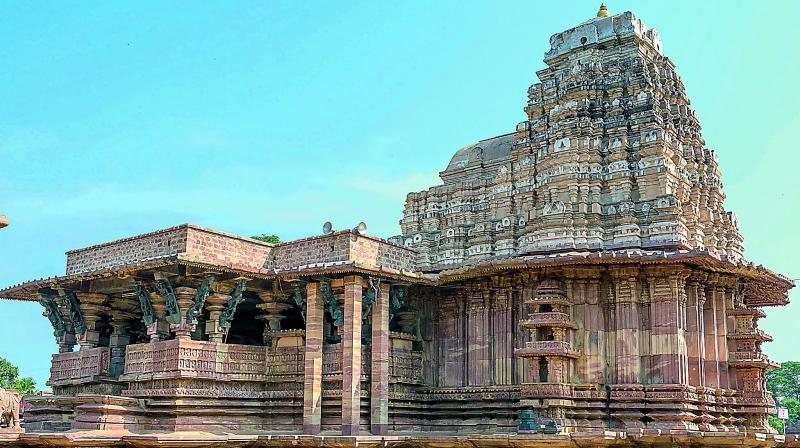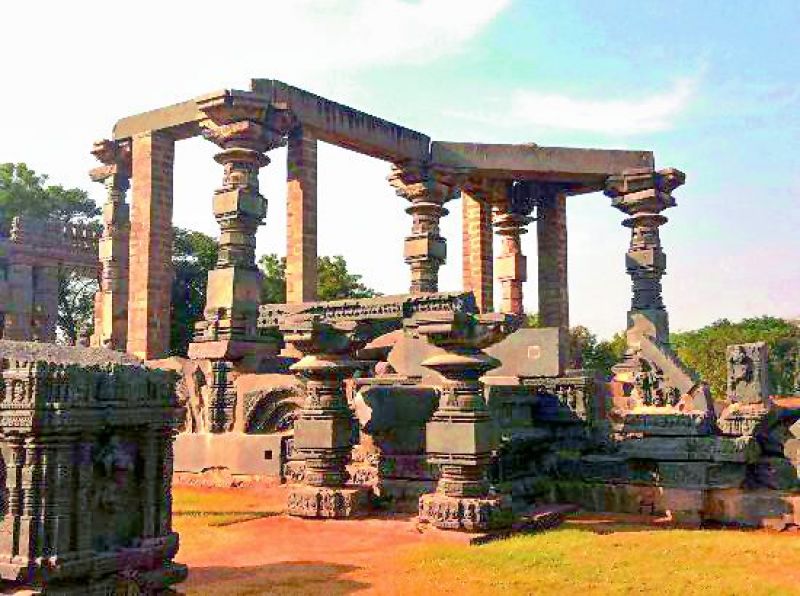Kakatiya dynasty sites are not on Centre's list for Unesco tag

Hyderabad: Three sites of the Kakatiya dynasty that were submitted in the cultural category to Unesco by the Centre have been dropped from the new list, amid increasing difference of opinion between the Archaeological Society of India and the state government.
The three sites submitted are the remnants of the Swayambhu temple and Keerthi Thoranas, Warangal Fort, Rudreswara temple (thousand pillars temple), Hanumakonda, and Rudreswara Ramappa temple at Palampet in 2014. They do not figure in the current list.
 Rudreswara Temple (thousand pillars temple)
Rudreswara Temple (thousand pillars temple)
The proposal had been submitted as the three sites had a common linkage characteristic of the Kakatiyan kingdom. The tank, temple and town are examples of creative masterpieces, interchange of cultural values and unique testimony of the Kakatiya dynasty, according to the proposal. The three edifices give an isolated view of their role of the period, especially the water tanks which resulted in flourishing of towns and temples.
In the meeting of the Archaeological Survey of India last week to discuss the manner in which the work on the monuments and sites which have been proposed for the heritage list was taken up, the TS state government officials did not attend.
 Warangal fort
Warangal fort
In addition, Telangana state Chief Secretary S.K. Joshi wrote to the Director General of ASI asking why the Kakatiya dynasty had not been included in the new list. The inclusion of the Deccan Sultanate in the new list by ASI has annoyed the state government, sources said.
The proposal of 2014 stated officers were in abeyance. The new proposal of 11 monuments has been prepared and if cleared all 11 monuments in South India will get the status.
A senior ASI officer said, “We are following the Jaipur model where a group of monuments and heritage sites were clubbed together and the World Heritage status was received. Hence, efforts are being renewed as there are nine from Karnataka and two from Telangana state which are Golconda Fort and Qutb Shahi tombs of the same era. The work on the Kakatiya dynasty is being followed up by the department.”
Mr Ranga Charyulu, retired deputy director of the state archaeological department, said, “The Kakatiyas ruled from 1153 to 1323. The village of temples has a lot of patta land that has been encroached. Removal of encroachments will come under the land acquisition Act. The Ramappa temple is the only one where the 100 metres space is available and it can get the status.”
In the Warangal fort, efforts have been made to remove the encroachments but there are still some of them, stated archaeologists. The ASI every year submits a list of monuments across India and then follows up with respective state governments. Over the years, they have shifted from stressing on a single monument to a group of monuments and sites of an era to achieve the status.
- World Heritage List has been given to 1,092 sites in the world.
- These are divided into 845 cultural, 209 natural and 38 mixed category sites.
- India is in the 6th position with 37 sites.
- India has 27 cultural sites, 7 natural and 1 mixed.
- TS does not have a single site despite there being representations from the year 2010 to Unesco.
What it takes to get Unesco tag
- To get the status of World Heritage Site, there are five main requirements:
- The site or monument must have historical and cultural significance.
- It must be in a condition to be preserved and for that reason there must not be any encroachments inside or near the site.
- It must be accessible to tourists and facilities like toilets and cafeterria can be created in and around the site.
- For preservation an area around the site for landscaping must be provided so that it can be kept free from pollution and also exploitative human intervention.
- The respective government must ensure that the title of the site or monument is clear.

